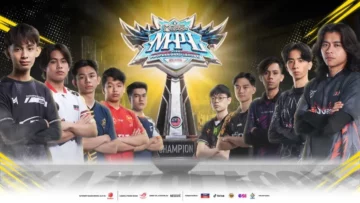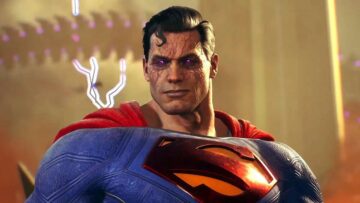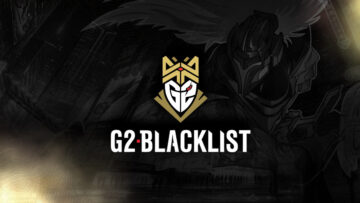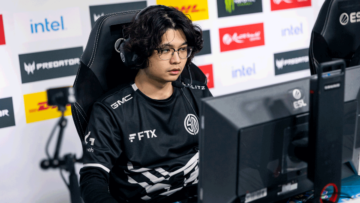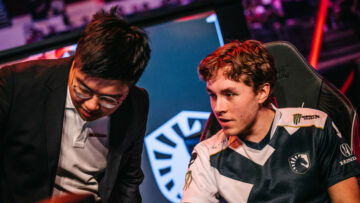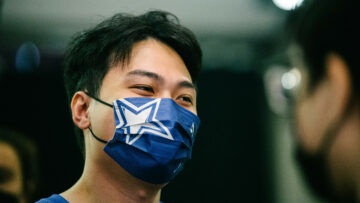Our favourite RPGs would be a lot less interesting without these women rounding out our party.
For Women’s History Month, we’re looking back at our favourite RPGs of all time – whether it’s Chrono Trigger or Mass Effect 2 – to find our 10 favourite female party members of all time. Party members generally add a lot of flavour to any good RPG, supplying players with helpful advice and witty banter, or simply adding to their combat prowess in dangerous situations. It’s not that games like Baldur’s Gate 3 wholly rely on the strength of its companions – but the game would far less interesting if it launched without key characters like Karlach, Shadowheart, Lae’zel, Minthara and Jaheira in your party.
RPGs are rich with memorable female party members, many of whom have become iconic in their own right. Picking out just 10 of our favourite female companions in the genre is a difficult task, but we’re narrowing this list down to women who aren’t just characters players meet along their journey – they have to specifically join the party for extended periods of time. That means no Yennefer from The Witcher 3 or Zelda from the Legend of Zelda franchise. If they join the party and you can mess around with their abilities, they’re in.
With that out of the way, here are our 10 favourite female companions in RPGs!
Futaba Sakura (Persona 5)
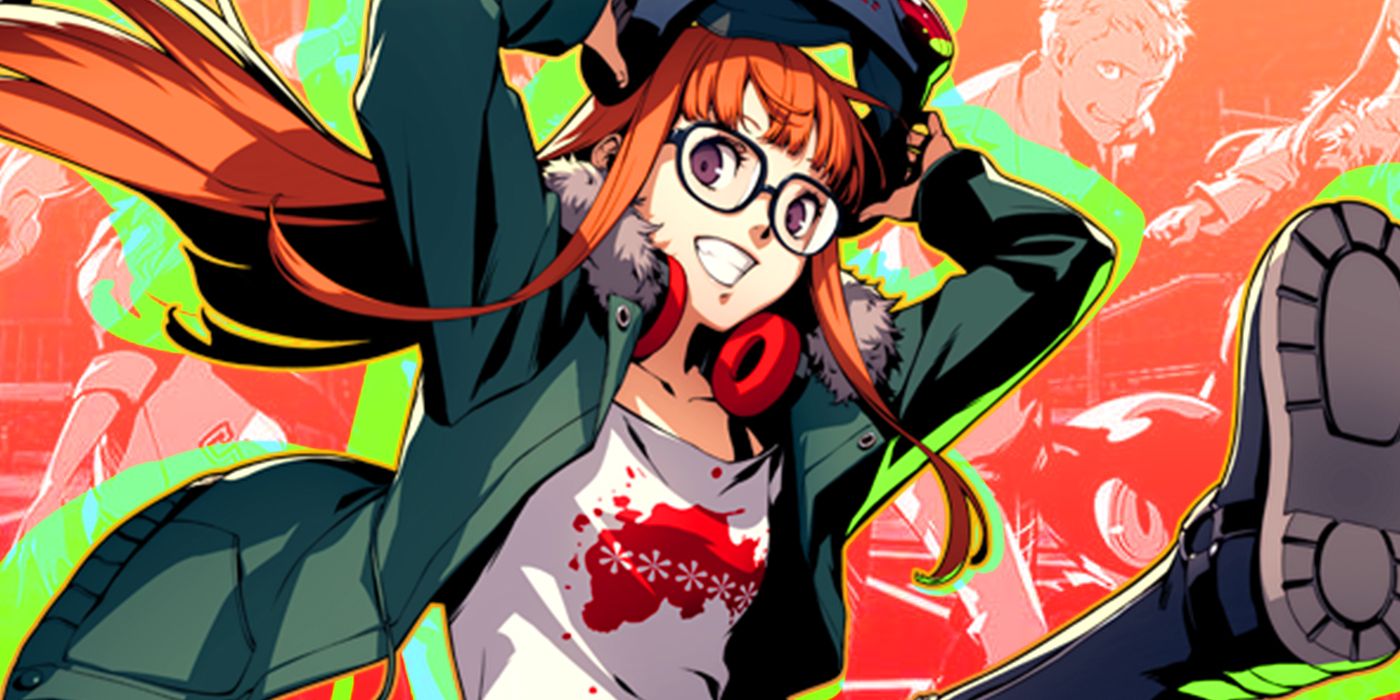
The Persona franchise is full of memorable female characters, but Futaba Sakura in Persona 5 left a particularly strong impression on us due to how much she changes over the course of the story. Players first meet Futaba as a mysterious recluse adopted by the protagonist’s father figure Sojiro. We only see brief glimpses of her throughout the story until we learn the truth: she’s hiding not just from the rest of society, but the self-loathing and guilt she feels due to the death of her mother, who left a suicide note blaming Futaba for her death.
Futaba’s story has dark beginnings, but it isn’t long until the Phantom Thieves help her confront her depression and realise that there might be more to her mother’s death than she realises. It’s a joy to watch her claw out of her shell as the story rolls onwards, and satisfying to see her finally confront the person behind her mother’s death. As the party’s navigator, she never really leaves Joker’s side whether he’s moving through a Palace or exploring dungeons – giving the player a front-row seat to her slow but cathartic transformation.
Lae’zel (Baldur’s Gate 3)

It’s fair to say that Lae’zel doesn’t make the best first impression on players in Baldur’s Gate 3. The first friendly face they see on a burning Nautiloid in the skies is a not-so-friendly Githyanki woman with a very big sword, who teams up with the player despite both party’s reservations about one another. It’s Lae’zel’s way or the highway, as far as she’s concerned – the stubborn, headstrong warrior is on a quest to destroy her people’s sworn enemies and is constantly pushing the player towards that goal too.
Lae’Zel can be brash and irritating, if hilariously blunt, but it’s only later on that players see a different side to her. As she confronts her god and realises her errors, Lae’zel becomes deeply attached to not only the player, but the rest of her companions and regards them with kindness rather than a general sense of apathy. Being essentially a young alien in Faerun, it’s not just that she’s opening up to people for the first time – but that a new world has been opened up to her. At the end of the campaign (depending on your choices), Lae’zel finds herself changed for the better. Still a strong warrior, but a vastly more empathetic – and surprisingly poetic – one.
Parvati Holcomb (The Outer Worlds)

Parvati Holcomb is one of The Outer Worlds’ most memorable companions, mostly due to the fact that she’s the first one many players will recruit during their playthrough. As the game’s world can often be as horrific as it is hilarious, Parvati’s inclusion in your party is important as both of you are experiencing the full breadth of this galaxy for the very first time. The only difference is that you can’t react to your surroundings verbally, but she can – and does, with much gusto.
While the rest of your crewmembers in The Outer Worlds are just as fun in more idiosyncratic ways, Parvati provides a fun and genuine perspective on things – though her constant chiding might wear you down during evil playthroughs. Her storyline makes up one of the game’s more memorable low-stakes sidequests too, where the player plays matchmaker between her and Junlei Tennyson – despite her general anxieties regarding her asexuality and pursuing her crush. Parvati is an endearing addition to The Outer Worlds’ party, and one I hope to see again whenever its sequel materialises.
Celes Chere (Final Fantasy 6)

Celes Chere might be one of the most memorable playable characters in the Final Fantasy franchise, despite belonging to one of its earliest entries: Final Fantasy 6. Celes comes into the story with a lot going for her compared to the rest of the party – having undergone a risky Magic Infusion process to gain enhanced magical abilities, she quickly becomes one of the Gestahlian Empire’s leading generals.
That aligns her with the villains of this story, but the events of the game see her connect with the party, make her own decisions and grow as a person despite her initial flaws. She’s also the main focal point of two of the game’s most iconic scenes – an attempted suicide by a cliffside and an opera performance. Throughout the ups and downs of her journey however, Celes never quite loses sight of who she is and what she can do.
Aqua (Kingdom Hearts)

Players get to party up with Aqua in the Kingdom Hearts prequel Birth by Sleep, where we learn about the Keyblade wielders running around before Sora’s time. Terra, Ventus and Aqua are a trio much like Sora, Donald and Goofy in the main series, all dreaming to become Keyblade Masters eventually. Out of the trio, Aqua is the only one to actually achieve her goal. She’s also the only to come out of the game relatively unscathed.
Aqua is certainly the most grounded out of the three party members in Birth by Sleep, and until Kairi learned to properly wield a Keyblade later on in the franchise, was the franchise’s most capable female character. Much like Sora, she has a pretty strong sense of good and evil, and constantly works to keep her friends together and safe – long past the golden age of Keyblade wielders. That’s dedication.
2B (Nier: Automata)

I know what you’re thinking: what is the main playable character of Nier: Automata doing on this list? Admittedly, we are cheating a little here, as 2B only becomes a party member once you beat the game and unlock its many playable ‘Routes’, which allow you to play as different characters and gain a new perspective on the main story’s events. In the main game, you play as the android 2B with a happy-go-lucky companion named 9S, but in Route B, you play as 9S with 2B in your party.
Both androids’ journeys diverge slightly at certain points in the main story, and Route B allows you to see what 9S was up to when he wasn’t by 2B’s side. These ‘Routes’ also serve to flesh 2B out further – at first, she was a cold-hearted android with an aim to complete her mission regardless of the moral consequences. As she explores the world with 9S by her side, she opens up to the fact that this new world might not be all that bad. Nier: Automata sees 2B move from a black-and-white world to one a shade more grey, her actions ultimately impacting the world in a much more positive way than she was programmed for.
Morrigan (Dragon Age: Origins)

It’s fair to say that Morrigan is one of BioWare’s most popular female characters to date, and a lot of that has to do with how important she is to the Dragon Age series. The shapeshifting Witch of the Wilds has appeared in both Dragon Age: Origins and Dragon Age: Inquisition, and there’s a strong chance of her appearing in Dragon Age: Dreadwolf given that it’s a direct sequel to Inquisition.
Players first meet Morrigan as a companion in Origins, where she appears to be something of a distrustful hermit – albeit a powerful sorceress in her own right. A memorable performance by Claudia Black (Uncharted) doesn’t hurt in leaving a lasting impression on players, as the party heads off to stop the evil Darkspawn from destroying Thedas. Morrigan’s killer design, sneery wit and air of mystery has made her a fan favourite in the franchise, and one of the most memorable RPG companions to boot.
Tali’Zorah (Mass Effect)

Tali’Zorah, often simply referred to as Tali, is the only companion in your party whose face you never see. She wears an envirosuit that masks her physical appearance throughout the main trilogy, and at first appears as a somewhat awkward engineer struggling with an ongoing conflict between the Geth and her species, the Quarians. Despite the player never being able to see Tali physically however, she becomes quite an endearing companion to have in the party.
By the time Mass Effect 3 wraps the main storyline up, players are tasked with deciding the outcome of the Geth-Quarian conflict. Despite the fact that this conflict has rolled through three games in a row however, you’re likely to choose the option that provides Tali the emotional catharsis she’s looking for. It’s hard to not feel for Tali as her species becomes wrought in danger, and it’s equally hard to not feel proud of her growth throughout all three games.
Lucca Ashtear (Chrono Trigger)

In a game as populated with rich characters like Chrono Trigger, Lucca Ashtear still manages to stand out. This ingenious inventor is the best friend of game protagonist Crono, accompanying him in the game’s time-travelling story. At the time of the game’s release, her inclusion was praised as gender-defying representation for female scientists, due to her practical style of clothing and the fact that she really is the party’s most skilled and intelligent inventor.
Players will remember Lucca from a specific scene in Chrono Trigger, where she tries to reverse time and prevent her mother from becoming handicapped. Trying to guide Lucca through her objective is stressful to say the least, given that players can actually fail to save her mother, but what’s truly heartbreaking is that there isn’t an outcome here that leaves her happy. Even with time travel in the palm of her hands, the threat of failure is inescapable. Lucca moves forward, but it’s a harsh lesson to learn for someone quite literally trying to fix her problems by hand.
Aerith Gainsborough (Final Fantasy 7 Remake)

Aerith Gainsborough is the first person players meet in Final Fantasy 7, and by far the most consequential despite initial appearances. Descended from an ancient race of people called the Cetra, Aerith is the last of her kind and works as a simple flower girl in Midgar – a rarity in the capitalist hellscape the city has become thanks to its corporate overlords at the Shinra Electric Power Company. After a brief tussle with Shinra, game protagonist Cloud Strife meets her in the slums of Midgar and the duo quickly become companions.
Once Cloud, Aerith and his party leave Midgar with their sights set on the villainous Sephiroth, their adventures take them across a world far beyond the steel sky. Aerith is expanded upon in the Final Fantasy 7 remake trilogy, doubling down on all the things that make her most memorable – her steadfast loyalty towards her friends, her empathy for the planet’s suffering and her willingness to fight for what’s right. She might be the game’s most pacifist-leaning character, but it’s quickly made clear that she’s a powerful mage not to be messed with.
- SEO Powered Content & PR Distribution. Get Amplified Today.
- PlatoData.Network Vertical Generative Ai. Empower Yourself. Access Here.
- PlatoAiStream. Web3 Intelligence. Knowledge Amplified. Access Here.
- PlatoESG. Carbon, CleanTech, Energy, Environment, Solar, Waste Management. Access Here.
- PlatoHealth. Biotech and Clinical Trials Intelligence. Access Here.
- Source: https://www.gosugamers.net/entertainment/features/70877-our-10-favourite-female-companions-and-party-members-in-rpgs
- :has
- :is
- :not
- :where
- $UP
- 10
- 2%
- 5
- 6
- 7
- a
- abilities
- Able
- About
- accompanying
- Achieve
- across
- actions
- actually
- add
- adding
- addition
- adopted
- adventures
- advice
- After
- again
- age
- aim
- AIR
- albeit
- alien
- Aligns
- All
- allow
- allows
- along
- also
- an
- Ancient
- and
- android
- Another
- apathy
- appearances
- appeared
- appearing
- appears
- aqua
- ARE
- around
- AS
- At
- attached
- attempted
- b
- back
- Bad
- BE
- beat
- become
- becomes
- becoming
- been
- before
- behind
- being
- belonging
- BEST
- Better
- between
- Beyond
- Big
- birth
- Black
- Blaming
- both
- breadth
- burning
- but
- by
- called
- Campaign
- CAN
- capable
- certain
- certainly
- Chance
- changed
- Changes
- character
- characters
- cheating
- choices
- Choose
- City
- clear
- Clothing
- Cloud
- combat
- come
- comes
- companion
- companions
- company
- compared
- complete
- concerned
- conflict
- Connect
- Consequences
- consequential
- constant
- constantly
- Corporate
- course
- DANGER
- Dangerous
- Dark
- Date
- Death
- Deciding
- decisions
- dedication
- deeply
- Depending
- depression
- Design
- Despite
- destroy
- difference
- different
- difficult
- direct
- Diverge
- do
- does
- Doesn’t
- doing
- donald
- doubling
- down
- downs
- Dragon
- due
- dungeons
- duo
- during
- earliest
- effect
- Electric
- emotional
- Empathy
- end
- enemies
- engineer
- enhanced
- equally
- Errors
- essentially
- Even
- events
- eventually
- expanded
- experiencing
- explores
- Exploring
- extended
- Face
- fact
- FAIL
- Failure
- fair
- fan
- FANTASY
- far
- feel
- feels
- female
- fight
- Figure
- final
- final fantasy
- Finally
- Find
- finds
- First
- first time
- Fix
- flaws
- flower
- focal
- For
- Forward
- Franchise
- friend
- friendly
- friends
- from
- full
- fun
- further
- Gain
- Galaxy
- game
- Games
- gate
- General
- generally
- genre
- genuine
- get
- GETH
- Girl
- given
- Giving
- Glimpses
- goal
- God
- going
- Golden
- good
- GosuGamers
- grounded
- Grow
- Growth
- guide
- Gusto
- hand
- Hands
- happy
- Hard
- Have
- having
- he
- heads
- hearts
- help
- helpful
- her
- here
- hiding
- Highway
- hilarious
- him
- his
- history
- hope
- horrific
- How
- However
- HTTPS
- Hurt
- i
- iconic
- if
- IGN
- image
- impacting
- important
- in
- inclusion
- infusion
- initial
- Intelligent
- interesting
- into
- IT
- ITS
- join
- journey
- Journeys
- joy
- jpeg
- jpg
- just
- Keep
- Key
- killer
- Kind
- Kingdom
- Know
- Last
- lasting
- later
- launched
- leading
- LEARN
- learned
- least
- Leave
- leaves
- leaving
- left
- less
- lesson
- like
- likely
- List
- literally
- little
- Long
- looking
- Loses
- Lot
- Loyalty
- made
- magic
- Main
- make
- MAKES
- manages
- many
- Masks
- Mass
- means
- Meet
- Meets
- member
- Members
- memorable
- might
- Mission
- Month
- moral
- more
- most
- Most Popular
- mostly
- mother
- move
- moves
- moving
- much
- mysterious
- Mystery
- Named
- Navigator
- never
- New
- no
- note
- objective
- of
- off
- often
- on
- once
- ONE
- ongoing
- only
- onwards
- opened
- opening
- opens
- Opera
- Option
- or
- origins
- our
- out
- Outcome
- over
- own
- Palace
- palm
- particularly
- party
- past
- People
- people’s
- performance
- periods
- person
- perspective
- phantom
- physical
- Physically
- picking
- plato
- Plato Data Intelligence
- PlatoData
- Play
- player
- players
- plays
- Point
- points
- Popular
- populated
- positive
- power
- power company
- powerful
- Practical
- Praised
- pretty
- prevent
- problems
- process
- programmed
- properly
- protagonist
- proud
- provides
- prowess
- pursuing
- Pushing
- quest
- quickly
- quite
- Race
- rarity
- rather
- React
- really
- recruit
- referred
- regarding
- Regardless
- regards
- relatively
- release
- rely
- remember
- representation
- reservations
- REST
- reverse
- Rich
- right
- Risky
- Rolled
- rolls
- rounding
- Route
- ROW
- RPG
- RPGs
- running
- s
- safe
- Save
- say
- scene
- scenes
- scientists
- see
- sees
- sense
- Series
- serve
- set
- she
- Shell
- side
- Sight
- Sights
- Simple
- simply
- situations
- skies
- skilled
- sky
- sleep
- slightly
- slow
- Society
- Someone
- something
- somewhat
- specific
- specifically
- stand
- steadfast
- steel
- Still
- Stop
- Story
- strength
- strong
- Struggling
- style
- suffering
- Suicide
- supplying
- surprisingly
- sword
- Take
- Task
- tasked
- teams
- Terra
- than
- thanks
- that
- The
- The Witcher
- the world
- their
- Them
- There.
- These
- they
- things
- Thinking
- this
- though?
- threat
- three
- Through
- throughout
- time
- time travel
- to
- together
- too
- towards
- Transformation
- travel
- tries
- trigger
- trio
- truly
- truth
- trying
- two
- Ultimately
- uncharted
- undergone
- unlock
- until
- upon
- UPS
- us
- very
- Villains
- was
- Watch
- Way..
- ways
- we
- wear
- What
- What is
- when
- whenever
- whether
- which
- WHO
- wholly
- whom
- whose
- wield
- will
- Willingness
- with
- without
- woman
- Women
- works
- world
- world’s
- would
- you
- young
- Your
- zephyrnet

